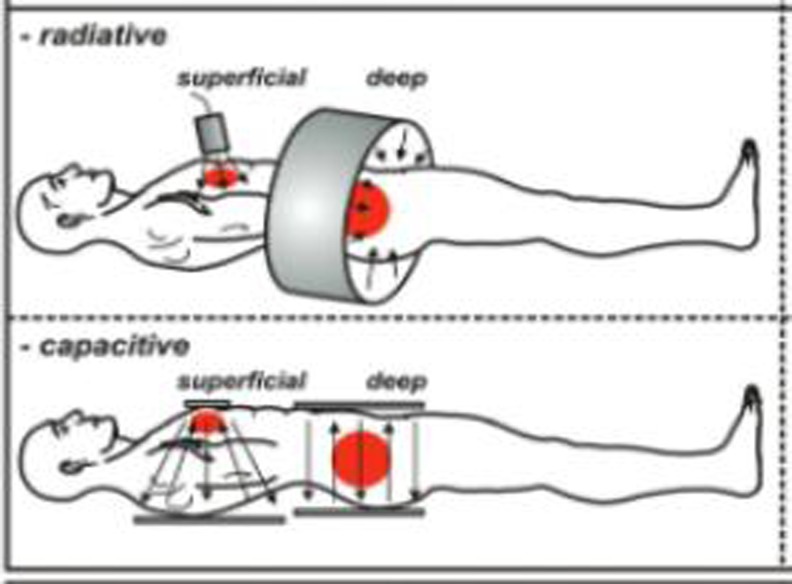Fig. 1.
Radiative and capacitative techniques for non-invasive loco-regional heating. Reference: Fig drawn from Kadota Fund 2004 clinical group consensus: van der Zee et al. [14]. a In radiative heating, usually an array of transmitting antennas are placed around the body. Each antenna can be controlled separately in power and phase. This in principal enables to maximize the impact to the desired region of interest. Such systems usually work in the range of 100 Mhz with up to 12 radiating antennas in a circular array. While the control over the impact is a main advantage of antenna systems, a disadvantage lies in the complexity of interferences and reflections within a heterogeneous tissue body, eventually resulting in undesirable so-called hot spots. For stretching this technology to reach sufficient temperatures, a real-time temperature monitoring is considered advantageous. Now there are some institutions worldwide which have set up a specifically dedicated MRI to this task of monitoring temperatures real-time in the heating process. b Capacitative systems in contrast are much simpler. There exist two electrodes and the patient’s body is placed in-between, serving as dielectric medium. Heat is generated by movements on the molecular level. Water molecules are dipoles; electrically unbalanced O-molecules bind electrons stronger than the H-molecules. Thus the O-side is electrically negative and turns itself towards the positive electrode. If charge at the electrodes is changed rapidly (in case of 13 Mhz, 13 million changes per second) then this water molecule rotates rapidly. In a connected array with others this causes friction which in turn generates the heat

